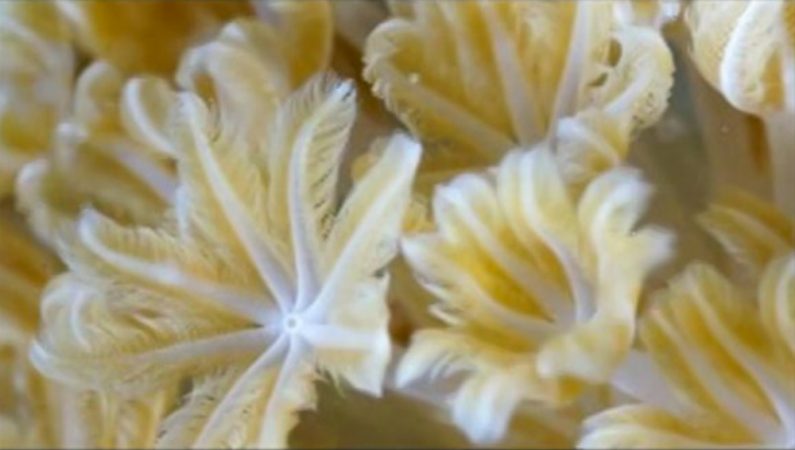Motion in the ocean
Scientists figure out why pulsing corals pulse

Here’s a new exercise: Call it the “pulsing coral.” While waving your arms slowly in the air, gently bring all of your fingertips on each hand together. Then spread them out again. Then bring them in again. Keep going, opening and closing, every few seconds, all of the time — and preferably underwater.
Certain corals known as xeniids (ZEE nee idz) do this day and night with only a few breaks. Marine ecologist Maya Kremien, of the Hebrew University of Jerusalem, in Israel, describes these corals as “amazing pulsating carpets.”
Kremien and her coworkers wondered why the corals keep moving. They’ve now uncovered a clue: Their motion mixes the water. And that helps in two ways. It sweeps in nutrient-rich water. It also flushes away excess oxygen.
Many corals owe their survival to photosynthesis. This process uses light to transform carbon dioxide and water into food. But the corals don’t perform photosynthesis — algae living inside them do. And they give a share of the food they produce to their coral hosts. In fact, pulsing corals appear to get all of their food from these in-house algae, Kremien’s team says. (These types of algae are single-celled organisms that can photosynthesize like a green plant but live inside the bodies of corals.)
Photosynthesis also produces oxygen. Previous studies — not on pulsing corals — found that too much oxygen can mess up photosynthesis. An excess can limit a coral’s access to carbon dioxide, which its algae need to photosynthesize. Kremien and her team suspected the xeniid corals’ pulsing swishes away some of the oxygen. This would bring in water rich in carbon dioxide. But this would help xeniids only if a buildup of extra oxygen was a problem for them, too.
To find out, the scientists raised xeniids in tanks with very high levels of oxygen. As predicted, photosynthesis slowed in these corals (compared with corals exposed to normal oxygen levels). So swishing the water indeed helped xeniids remove excess oxygen, the scientists say. That motion also may bring in more food for the corals, they conclude.
Xeniids are the only corals that move like this. Other scientists are pleased to see data finally offering an explanation for the exercise.
“I have been wondering why [this coral] pulsates for decades,” notes Katharina Fabricius. She’s a reef ecologist at the Australian Institute of Marine Science in Townsville. She told Science News: It’s “great to see the mystery solved.”
Open-and-shut case from Science News on Vimeo.
Xeniid corals pulse to push oxygen away, allowing water rich in carbon dioxide to come closer, a new study suggests. Credit: M. Kremien et al/PNAS 2013
Power Words
photosynthesis (verb: photosynthize) The process by which green plants and some other organisms use sunlight to produce foods from carbon dioxide and water.
algae A simple, nonflowering, plantlike organism.
marine ecology The study of how organisms that live in the water relate to each other and their environment.







